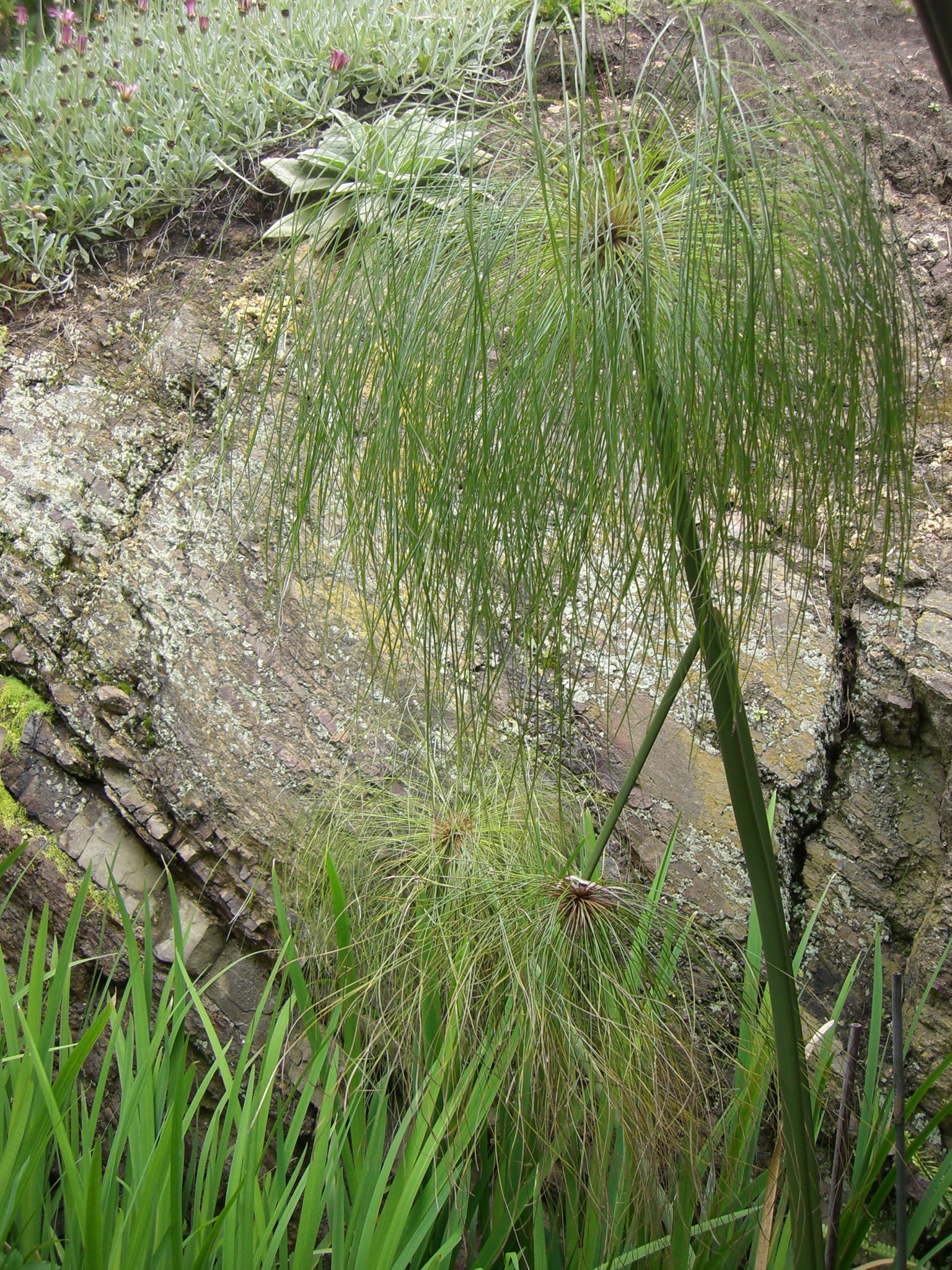
Greek kyperos – sedge.
Annual fibrous-rooted, or perennial rhizomatous herbs (occasionally tuberous). Stems 3-angled to cylindrical. Leaves mostly at the base of the stems, sometimes reduced to sheaths only; ligule present or not. Inflorescence simple or compound, occasionally reduced to 1 spikelet. Spikelets with many or few flowers. Stamens 1-3. Fruit a 3-angled or lens-shaped nut.
A few species are used by pools and water, others in aquaria or as components of revegetation programs. C. rotundus, Nutgrass, from Africa and Asia is a renowned weed with oxalis-like tubers that are hard to eliminate from gardens. C. papyrus is the ancient Egyptian parchment of the Nile Valley but also a popular ornamental sedge. C. esculentus,Yellow Nutgrass, is more or less cosmopolitan; it has edible tubers eaten as Chufa or Tiger Nuts but has become weedy in many warmer regions of the world and a few populations have developed around Melbourne.
Mostly by division, occasionally by tubers or seed.
C. bulbosus has edible tubers as does C. esculentus var. sativus, the latter being used to prepare the Spanish drink Horchata de Chufa. Some species are used for craft, matting etc. Several species have medicinal properties that are used locally.
Inflorescence generally of many spikes; florets bisexual; spikes compressed with the glumes and florets in 2 ranks.
About 600 species world wide, mostly tropics and subtropics with about 150 species in Australia in all states (32 species naturalised).
Source: (2005). Cyperaceae. In: . Horticultural Flora of South-eastern Australia. Volume 5. Flowering plants. Monocotyledons. The identification of garden and cultivated plants. University of New South Wales Press.
Updated by: Rob Cross, March 2018
